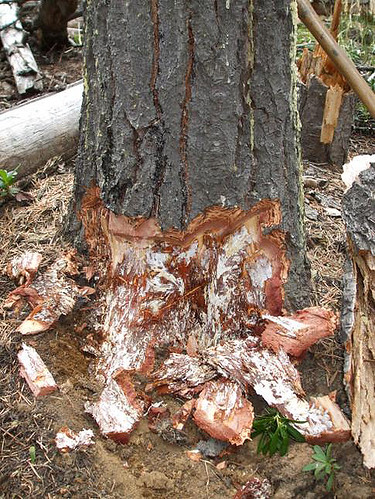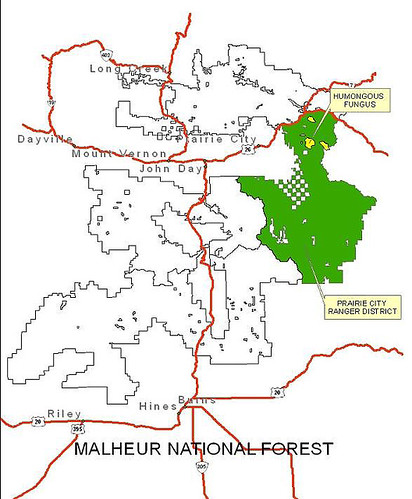
According to Richard Faulk’s book “Gross America”, the Malheur National Forest in eastern Oregon’s Blue Mountains is “… one of my favorite gross places in America.”
That’s because it is home to arguably the largest living single organism on earth.
“Don't be fooled by an ordinary looking mushroom. Beneath it broods an ancient horror that has been growing quietly for thousands of years,” Faulk writes on CNN’s Website.
“A Malheur National Forest cluster of Armillaria ostoyae, or honey mushroom, is part of the world's largest fungus, which engulfs 3.4 square miles -- that's 2,200 acres -- of Oregon. This massive mushroom is estimated to weigh 7,567 to 35,000 tons, which would make it the largest living organism in the world. But that doesn't sound nearly as gross as being the largest fungus.”
Armillaria ostoyae, parasitizes, colonizes, kills and decays the root systems of various conifer hosts, resulting in what forest managers know as Armillaria root disease. While being a pathogen and tree-killer, it can also maintain itself in dead woody material for many years.
Faulk continues, “Now for the letdown: The bulk of this behemoth resides underground in a stringy network of roots called a rhizomorph. The only visible traces are the mushrooms that sprout in the fall. They may not look like much but once you know their dark secret, you can't help but see them in a new, sinister way.”
They are not only large, they are also very old, with one string estimated to be between 1900 and 8650 years, based on the length of time it took to expand to its current size at rates ranging from 0.7 to 3.3 feet a year.

Scientists are unsure of all the factors that allowed these strands to become as large and as old as they have. Armillaria may have effectively spread in historic forests of large trees that were less-densely stocked, and composed of species less susceptible to root disease. Alternatively, forest structure and composition are now possibly more amenable to Armillaria spread as current conditions are different from those that developed under the natural fire regimes of the last several hundred years.
The Humongous Fungus, as Forest Service staff has come to label it, joins six other of Faulk’s favorite gross destinations: The Mütter Museum in Philadelphia, Necropolis by the Bay in Colma, Calif., the Indiana Medical History Museum in Indianapolis, Leila's Hair Museum in Independence, Mo., the Berkeley Pit in Butte, Mont., and the Morbid Anatomy Library in Brooklyn, N.Y., round out his list.
A scientific report on the fungus can be found online.


